BLISTER & CLAMSHELL
Blister pack and clear clam shell are very common types of packaging. We can provide one stop production for you. You provided us the sample and a drawing of specification of the shell. We can make a dummy out of it. For blister and clam shell, we have material choices of PVC and PET (environmental friendly material) available.
BLISTER PACKAGING SOLUTION
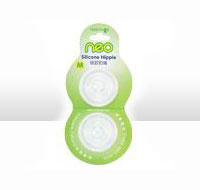
Packaging for containing and displaying many consumer products is often formed as clamshell packaging or blister packs comprised of either one or two plastic members. These plastic members may have one or more bubbles, blisters or pockets which house the product and any associated product accessories. Often times, a singular plastic sheet may be held to a cardboard sheet having various printed product information, illustrations, advertising for consumer marketing purposes and having a slot or hole to allow suspension of the package from a hook of a display rack. Some blister packages incorporate flat display cards contained between two transparent clamshell halves.
Especially when using completely transparent clamshell halves, it may be desirable to expose certain portions of a product, while concealing other portions of the product or product accessories so that they are not visible to the customer. For example, the wiring, batteries or other electrical components of a portable audio product may not be desirable as display items, while the main portion of a product, such as an audio unit, should be visible to consumers. Current packaging configurations of the clamshell or blister pack type can conceal too much or too little of the product. For instance, in a conventional clamshell packaging configuration for electrical consumer products, a planar paperboard insert may be used to conceal portions of the product from frontal view. However, this type of insert will not conceal the view from the sides, bottom or rear of the packaging. Therefore, the consumer can still see a large portion of the associated electrical hardware, such as electrical cords, electrical adapters, etc., and will focus less of their attention on the main product itself.
It would therefore be desirable to provide a clamshell package for containing and displaying only the main portion or portions of a product, and preventing accessories from being viewed from the front and sides and preferably, the bottom. Optionally, it would be desirable to selectively conceal the view of a portion of the product from the rear. In general, it would be desirable to combine a transparent clamshell package with three-dimensionally shaped pockets or blisters for holding a product with a three-dimensional insert that obscures the consumer's view of at least certain product components from more than just a frontal view.
Blister packs are created by means of a form-fill-seal process. A form-fill-seal process means that the blister pack is created from rolls of flat sheet or film, filled with the product and closed (sealed) on the same equipment. Such equipment is commonly called a form-fill-seal machines (FFS machines) or blisterline.
- Custom Contoured Blisters and Custom Printed Blister Cards
- Specialty Printed/Die Cut shapes
- Clamshell- Clamshell & Insert Card
- Blisters & Blister Cards
- Try Me Blister & Blister Card
- Tri-Fold Clamshell & Insert Card
- Footed Clamshells & Insert Cards
BENEFITS OF UGI BLISTER
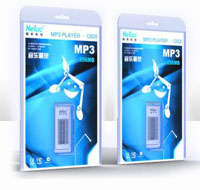
Blister pack is a term for several types of pre-formed clear plastic packaging used for small consumer goods. Blister packaging is an inexpensive option for creating packages that are durable, transparent, and tamper proof.
Blister cards are a functional and attractive way to display products ¨C it's no wonder they're the industry standard. But what sets UGI apart is the choice of water-based or solvent-based coating on our cards. Solvent-based coating offers multiple advantages including a cohesive bond that's an average of 50% stronger with half the application time. Whether the blister is made of PVC, styrene, PET or RPET (recycled PET), solvent coatings maintain solid bond coverage around the entire flange of the blister.
Blister cards as well as blister shells can be produced either as a combination run, or a dedicated run. The most economical is the combination run where the setup charges are dispersed across several customers by combining various customers' cards on the same sheet.
The two primary components of a blister pack are a pre-formed plastic blister and a printed paperboard card which has a heat-seal coating. Some packs use a foil, plastic or laminated material to bond to the pre-formed blister, usually in medication.
- Eye-Catching
- Compact and protective
- Light weight
- Ideal for items of relatively small to medium size
SEAL BLISTER (cardboard card)
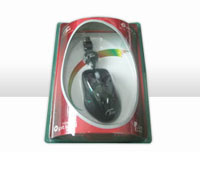
The most common type of seal blister consist of carded packaging where goods such as toys, hardware, and electrical items are contained in between a specially made paperboard and clear pre-formed plastic such as PVC.
The plastic, transparent so the item can be seen and examined easily, is vacuum-formed around a mold so it can contain the item snugly, and have room to be opened upon purchase. The blister packaging is attached to the blister card through a heat-sealing process that allows the product to be displayed in a wide variety of methods
CLAMSHELL BLISTERS
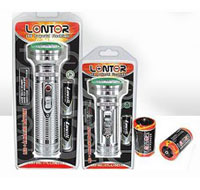
The use of blister pack is somewhat limited to light weight items. For heavier items, one should consider using plastic clamshells. Clamshell blisters are typically used for theft-prone items like consumer electronics, it consists of either two pre-formed plastic sheets or one sheet folded over onto itself and fused at the edges. They are usually designed to be difficult to open by hand so as to deter tampering and pilfering.
The two blister halves are usually joined by high frequency welding machines. High frequency welding is a method of welding 2 thermoplastic parts, in which the surfaces to be joined are heated by contact with electrodes of a high frequency electrical generator. The resulting joint can only be broken with a knife or scissors. Hence, HF welded blister packs are perfect for heavy products and items attractive to shoplifters.
There are many other different types of clamshell packaging. Among them, those known as tri-fold clamshells deserve special mention. Tri-fold clamshells are designed to merchandise a product by hanging it on a peg wall, standing it on a shelf, or sitting it in a display. The three part design typically includes a triangular base that allows the clamshell to stand upright on a shelf.
This is a twin blister design. The two halves are connected by a hinge. This form of packaging has the advantage that the contents are fully visible, as with the seal blister between cards. The packaging is closed by the tabs molded into the blister. If a blister card is used it is inserted between the two halves of the pack. Folding blisters can be closed without special equipment.
SKIN PACKAGING
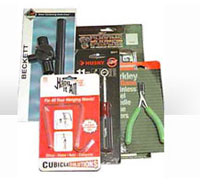
Skin packaging, or skin pack, is a type of carded packaging where a product (or products) is placed on a piece of paperboard, and a thin sheet of transparent plastic is placed over the product and paperboard.
The printed paperboard usually has a heat-seal coating. The plastic film is softened by heat and draped over the product on the card. Vacuum is sometimes used to assist a firm fit. The film bonds to the heat-seal coating on the paperboard. The skin-packed piece then may need to be cut into individual units.
Skin packaging somewhat resembles a blister pack, with the major difference being that the plastic surrounding the product is formed over the product, instead of being pre-formed.
Any queries regarding our products or services, feel free to contact us at + (86) 135 333 11702 or email us at [email protected] to get immediate assistance from our Customer Support Team.





